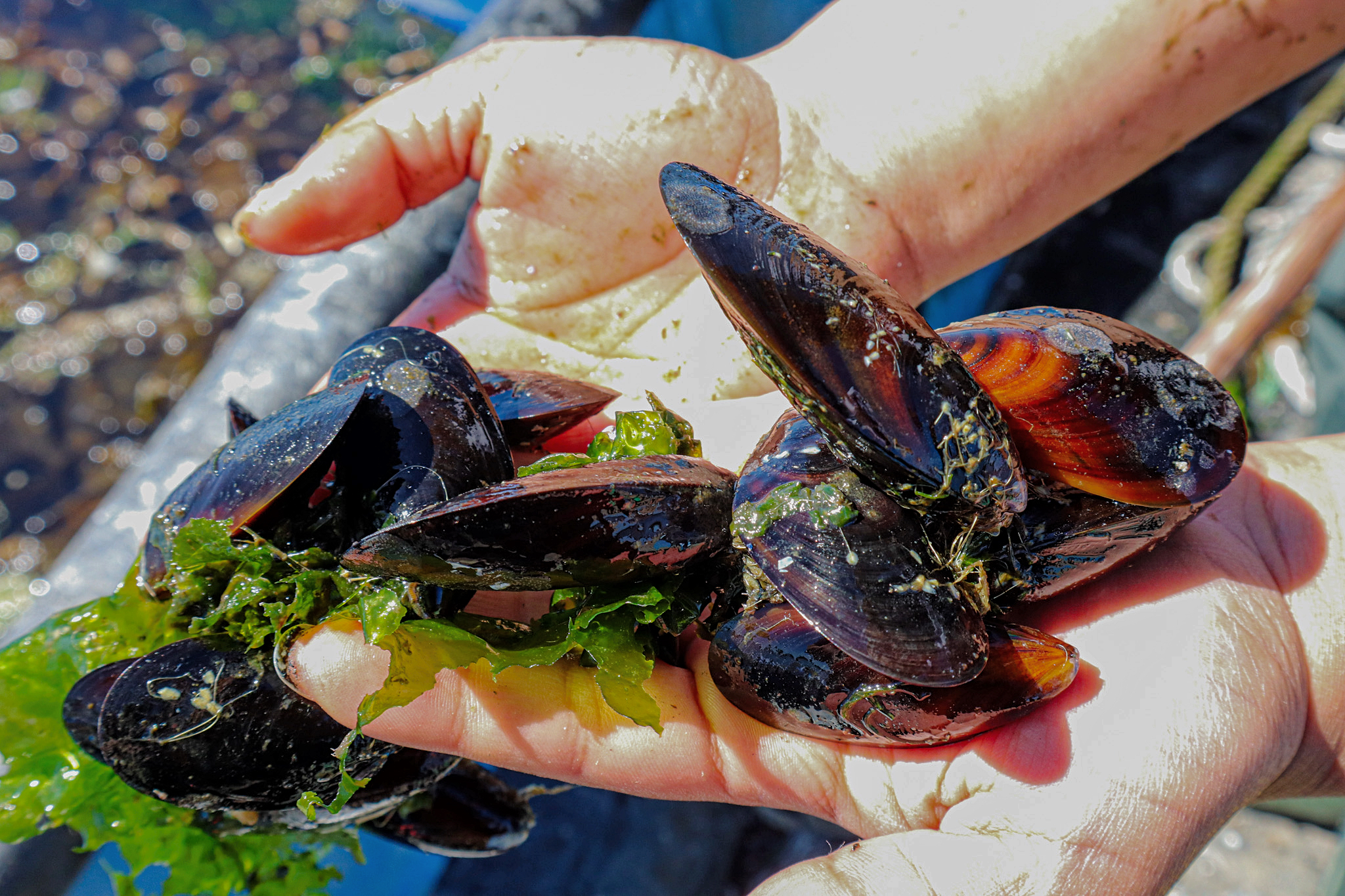
22 Jul Study Reveals Mussel Farms May Act as a “Genetic Filter” for the Species in Seno del Reloncaví
A recent and unprecedented discovery published by researchers from the Millennium Institute SECOS has revealed genetic differences between mussel (Mytilus chilensis) populations in aquaculture farms and those in natural beds. According to the authors, this is the first reported evidence of adaptations that enhance the survival of certain individuals in suspended longline cultures in southern Chile.
The Chilean mussel has become a key player in national aquaculture, positioning Chile as the second-largest producer of mussels globally—after China—and making it the country’s second most socioeconomically important aquaculture species in terms of exports. This industry relies exclusively on the natural production of mussel seed from wild beds in the Los Lagos Region.
In this context, a recent study published in the journal Aquaculture identified genetic variants more frequent in farmed populations than in natural ones, which may increase survival under farming conditions. This is the first documented case of small-scale adaptive genetic differentiation in farmed populations of Mytilus chilensis.
The research was part of Charel González’s master’s thesis at UCSC. She is now a PhD student in Biology and Applied Ecology at Universidad Católica del Norte and an ANID fellow with SECOS. Her study aimed to answer a previously unexplored question: Can mussel farms act as a genetic filter?
González, along with SECOS researchers Pilar Haye (UCN), Bernardo Broitman (UAI), and Nicolás Segovia, collected adult mussels from both wild beds and aquaculture farms in two key areas: Ilque Bay, near Puerto Montt, home to fattening centers, and Caleta Chaparano in the Reloncaví Fjord, which hosts some of the region’s and country’s most important seed collection areas. Genomic analyses were conducted on collected individuals to compare their genetic makeup and detect signs of adaptive differentiation.
“We found signs of genetic differentiation between farmed mussels and those from wild beds in the Reloncaví Sound—something never documented before for this species,” says González. “What’s surprising is that in places like Chaparano, the natural beds and the farms are less than 50 meters apart, and the distance between Ilque Bay and Chaparano is only 45 km. Even so, the farmed mussels in Chaparano seem to be genetically responding to the harsh conditions of the fjord: large fluctuations in salinity due to freshwater input and highly variable temperatures.”
The article notes that this genetic differentiation is mainly associated with environmental factors such as salinity and temperature and could be influenced by the specific conditions of suspended longline farming systems, which involve high densities of individuals in confined spaces.
“We were already aware of the genetic diversity and differentiation among wild mussel beds, as they are the foundation of mussel farming,” explains González. “The mussel seeds used in longline farms throughout the Los Lagos Region are collected exclusively from these wild beds. But no one had ever directly compared wild beds and farmed populations from the same locality.”
“We’ve been trying to understand how wild mussel populations function for quite some time, given their importance to this socio-ecological system that directly supports over twelve thousand people in the Los Lagos Region through employment,” adds Nicolás Segovia, SECOS data manager and lead investigator of the FONDECYT project that funded much of the research.
These highly variable environments, combined with the high density of individuals in farms, appear to act as an additional early-stage filter, favoring certain alleles identified through detailed genomic analysis. This finding is unprecedented not only for the Chilean mussel but for mussel aquaculture more broadly.
“We know that mussels have enormous genetic diversity, which is positive because it makes populations more resilient to environmental changes. Also, the dispersal capacity of mussel larvae and the translocation of seeds across the region are key processes to ensure connectivity among distant populations, preventing them from becoming genetically distinct. But now, we know that despite all this, adding aquaculture into the equation leads to a different outcome,” Segovia adds.
“Currently, management policies in mussel farming focus primarily on regulating the collection and transport of mussel seed. However, our results suggest that it’s also crucial to consider how farming conditions may affect the genetic diversity and adaptive capacity of mussels in the long term,” concludes González. “To protect this species and ensure the sustainability of the mussel farming sector, we propose complementing current management with ongoing monitoring of genetic diversity in both wild and farmed populations, to gain a more complete understanding of the system.”


